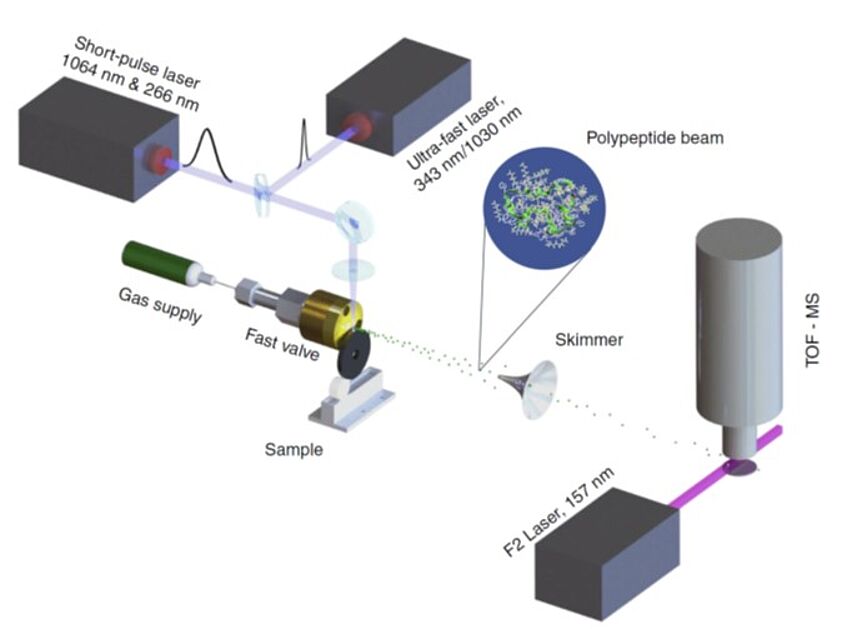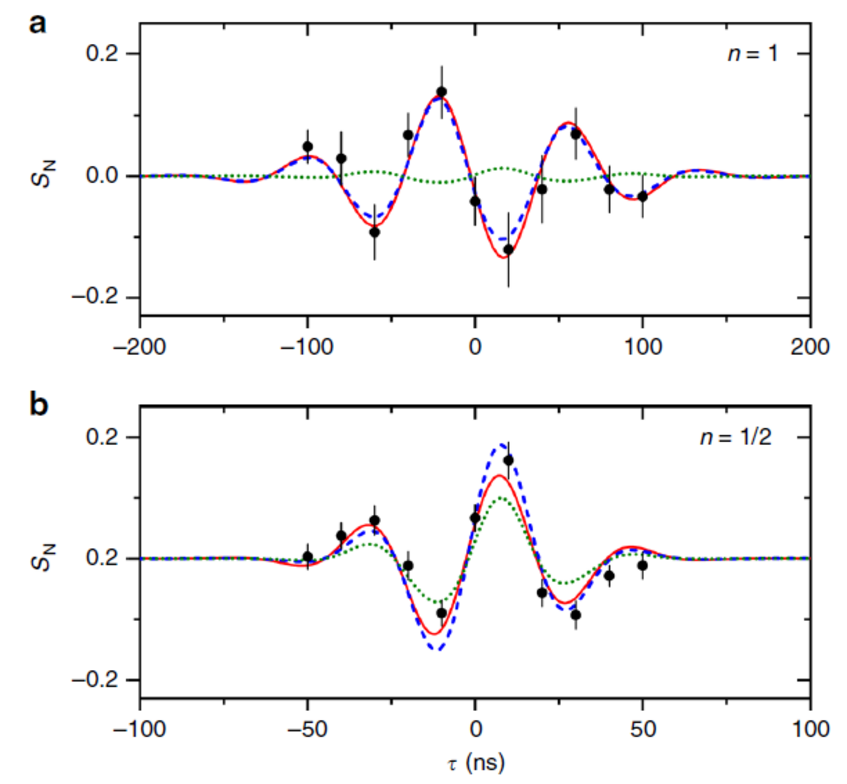The matter-wave nature of a large polypeptide
Preparation of a neutral polypeptide beam

Preparation of a neutral polypeptide beam
It is a grand challenge to prepare neutral beams of large neutral polypeptides for quantum interference experiments. This is mainly because of their many peptide bonds, and the risk of fragmentation in the volatilization event. While previous experiments in mass spectrometry and matrix assisted laser desorption (MALD) had worked with laser intensities around 106-107 W/cm2 we find that we can softly transfer isolated large peptides into the gas phase by using 1012 W/cm2 . The large molecules are then immediately cooled and carried away by a pulsed seed gas.
In collaboration with Marcel Mayor and Valentin Köhler at the University of Basel, we have explored the mass and complexity limit of desorbing polypeptides and proteins in high vacuum and were able to launch and photoionize peptides even as massive as 20 kDa, if they contain a very high content of tryptophan molecules. The same idea has allowed us to launch the 15-amino acid antibiotic polypeptide gramicidin D and to demonstrate its de Broglie matter-wave nature in OTIMA interferometry [5].
Single Photon Depletion of the Peptide Beam

Single Photon Depletion of the Peptide Beam
The same single-photon ionization of Tryptophan that serves in the detection of the peptide, is also used to realize VUV absorptive photo-depletion gratings. Three such pulses with time delays of the order of 20 µs are sufficient and needed to prepare transverse coherence in G1, diffract the molecules at G2 and to probe the emergent molecular density pattern in G3.
Discerning Quantum From Classical Fringes

Discerning Quantum From Classical Fringes
The molecular beam was exposed to three vacuum ultra-violet laser pulses (157 nm) each of which was retro-reflected off the same mirror to form a standing light wave with a few millimetres of coherence length. The transverse coherence of the excimer laser is of the order of 80 µm but does not yet limit the quality of the standing light wave in 1 mm distance from the mirror surface.
The Talbot-Lau effect is at the heart of the experiment and the cause for the appearance of a periodic molecular density structure (more or less molecules at specific positions) at a well-defined moment in time. The timing accuracy of only a few nanoseconds is crucial in this setting and also key in identifying the emergence and the quantum nature of the interference pattern.
For that purpose we plot the interference contrast as the normalized signal difference between "on" and "off" Talbot resonance as a function of the grating pulse delay. In the figure it is shown pulse timings around the first and the half Talbot order. The experimental results are represented by the black full circles and well reproduced by the full quantum model (red line). This is in clear difference to the full classical model, shown as the green dotted line.
- A. Shayeghi, P. Rieser, G. Richter, U. Sezer, J. H. Rodewald, P. Geyer, T. J. Martinez, and M. Arndt,
Matter-wave interference of a native polypeptide
Nat. Communs. 11, 1447 (2020).
